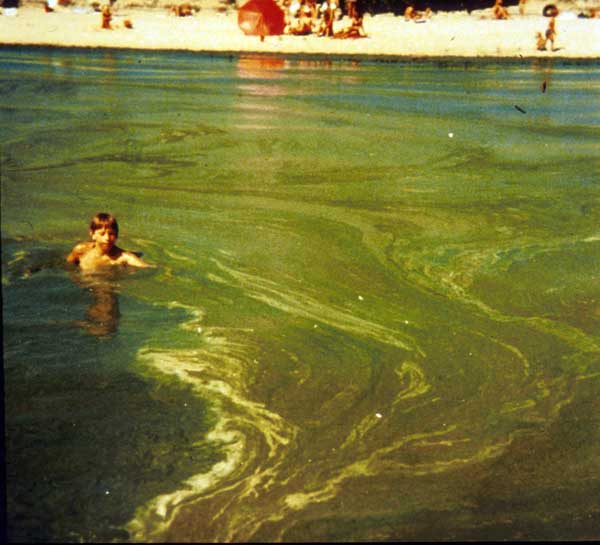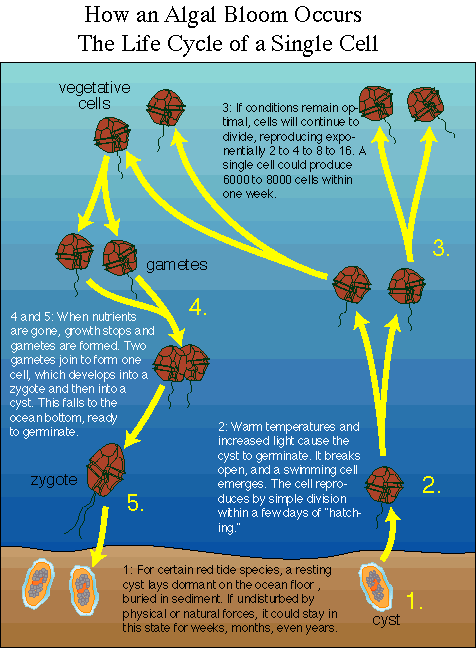Life History and Reproduction
Red tide came rolling in to make history before the 1970s. Then, Florida red tides were believed to begin inshore because of discolored water, dying fish and reparatory irritation since they were observed first around barrier island and passes. That changed when data compiled showed that the HABs began in nutrient poor environments that were usually 18 to 74 kilometers offshore. The resting populations of K. brevis are believed to reside in specific areas on the west Florida continental shelf.
The blooms develop in four stages and the first stage is initiation. This is when K. brevis was originally introduced to the area. Growth is the second stage, and during this, the population increases. The third stage, maintenance, is when the blooms are maintained in a circulation feature offshore or moved inshore by currents and winds. If and when the bloom moves inshore, there are increased nutrient levels that allow the cells to grow rapidly and currents may also concentrate the bloom even further. The fourth and final stage of K. brevis development is termination. This is when winds and currents disperse the cells and introduce new water masses which in turn moves the blooms to different areas.
From a 28 month study conducted by Project Hourglass they concluded that K. brevis blooms along the southwestern cost of Florida or they may be moved along to the Gulf of Mexico. In addition, they may be entrained by the Loop Current into the Gulf Stream.
How does Karenia brevis reproduce? In most cases algae reproduces by asexual fission. This means that one cell grows and then divides into two cells, then four, then eight, then sixteen, and this continues. When algae, along with HABs are not grazed upon by animals or their is a shortage of nutrients and light, the HABs, like Karenia brevis can accumulate and become visible and more importantly dangerous.
When nutrients become scarce some species fall back on sexual reproduction. If and when they sense their bloom times are near the end, the algae will form a thick walled, dormant cell (also known as a cyst) that settle at the bottom of the water. By forming a cyst, these algae can survive for years under catastrophic conditions, and when the environment becomes favorable the cysts rupture, germinate and they populate the water with a new generation of photosynthetic algae ready for another bloom.
The vegetative cells are haploid and the gametes are isogamous which means they have positive and negative mating types.
Find out how this organism interacts with others in its habitat or you can go home.


